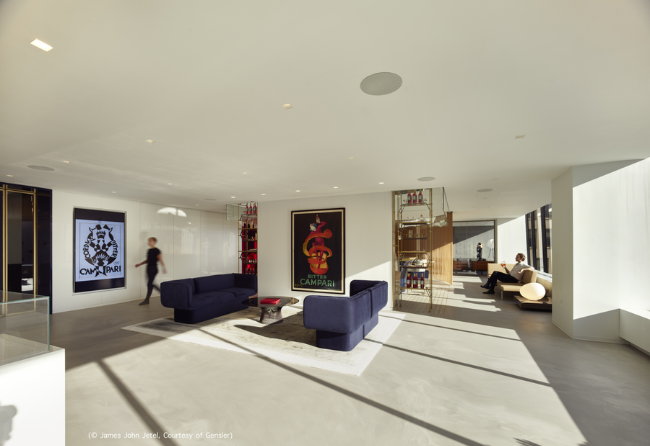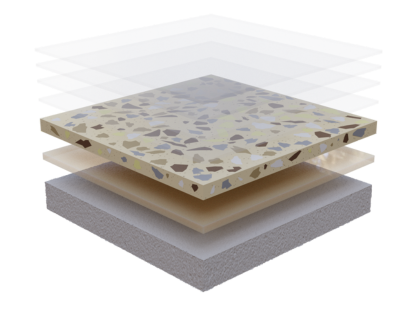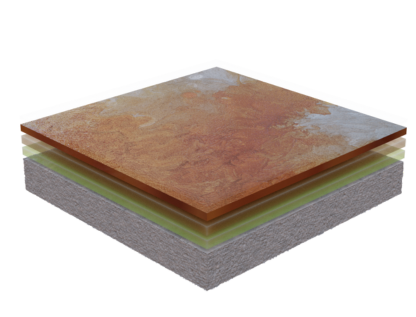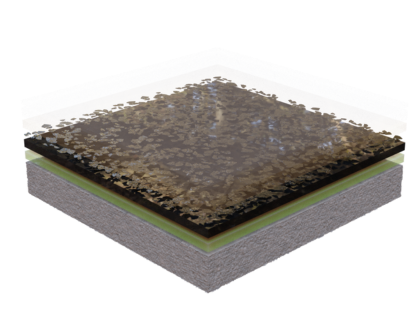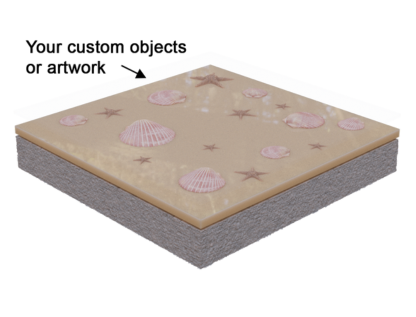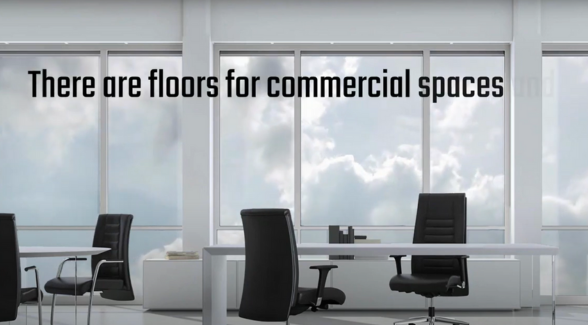Ergonomic Flooring
Ergonomic floors offer flexibility underfoot, providing far more comfort than hard surface floors, such as polished concrete or porcelain tile.
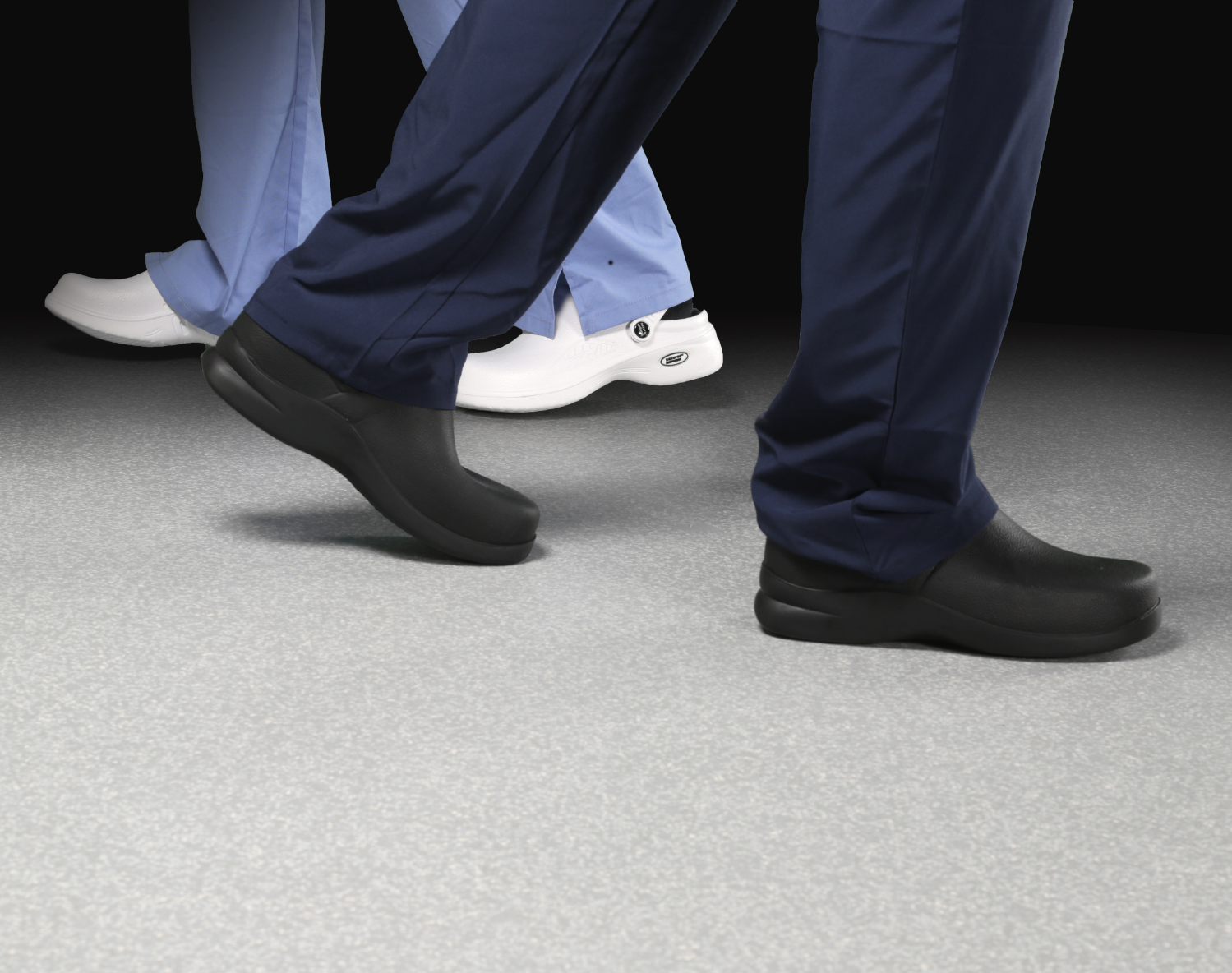
Happy feet, legs, and backs boost morale and productivity.
People who stand on their feet for long periods of time, like surgeons, will confirm the value of ergonomic flooring. Employees cannot perform at optimal levels when they are hurting or uncomfortable. Choosing ergonomic flooring is just good decision making.
What is Ergonomic Flooring?
Ergonomics in its simplest form is the art of human engineering. For designers, planners and decision-makers, ergonomics is about comfort. Ergonomic flooring is designed to reduce physical strain and support those who stand or walk on it for extended periods of time. Resilient seamless floors can produce desired design elements while offering a less rigid flooring alternative.
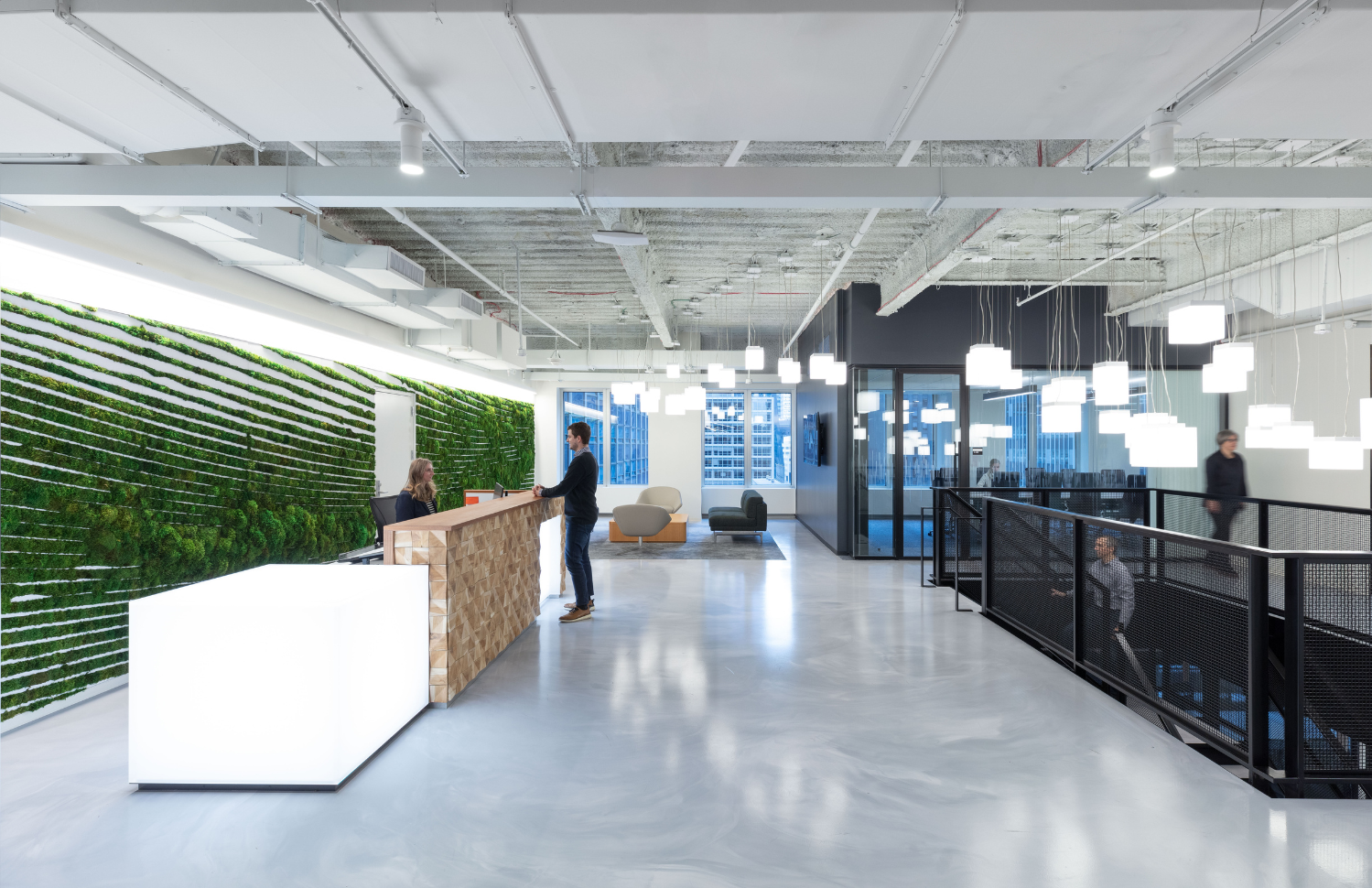
The Benefits of Ergonomic Floors
Ergonomic flooring offers many benefits, such as:
- providing a comfortable and desirable environment for people to work or visit
- sustaining or increasing employee productivity by providing a comfortable environment and reducing standing-related ailments and fatigue
- Noise reduction with resilient flooring systems
- Saving money on workers' compensation costs or employee absenteeism and turnover
- boosting employee morale and providing a positive visitor experience
Ergonomic Floors are Perfect For:
Explore a Project
Explore projects where ergonomic flooring made all the difference. Dive into real-world examples where our expertise delivered flooring solutions built to last in the most demanding environments.
Recommended Ergonomic Flooring
Stonhard formulates floors for every environment, including those requiring ergonomic properties. Our team of Territory Managers, Architectural and Engineering Representatives will assist you in choosing the best product for your environment with the look you desire.
FAQ
Got questions? We've got answers. This FAQ section covers the most common inquiries about ergonomic flooring to help you make informed decisions.
Ergonomic flooring is designed to reduce strain and enhance comfort for people standing or walking on it for extended periods. It provides a resilient, flexible surface that supports better posture and reduces fatigue.
Resinous flooring offers a flexible underfoot experience, reducing impact and strain on joints. This makes it more comfortable than traditional hard surfaces like polished concrete or porcelain tile.
Benefits include enhanced comfort, reduced fatigue, improved posture and decreased risk of injury. Healthier employees are more productive and less prone to absenteeism. Comfortable guests are happier and more likely to frequent your business and, as a result, spend more time and money.
It is commonly used in environments where people stand or walk a lot, such as schools, commercial kitchens, transportation concourses, hospitals, and more.
Related Flooring Features
Expert Guides & Resources

Is Resilient Flooring or Hard Surface Flooring Better for My Facility?
We know the commercial flooring market offers a vast array of optioned designed to meet your business's specific requirements and budget. Here we take a look at how two flooring types differ, exploring advantages and disadvantages.
 Office Buildings
Office Buildings

